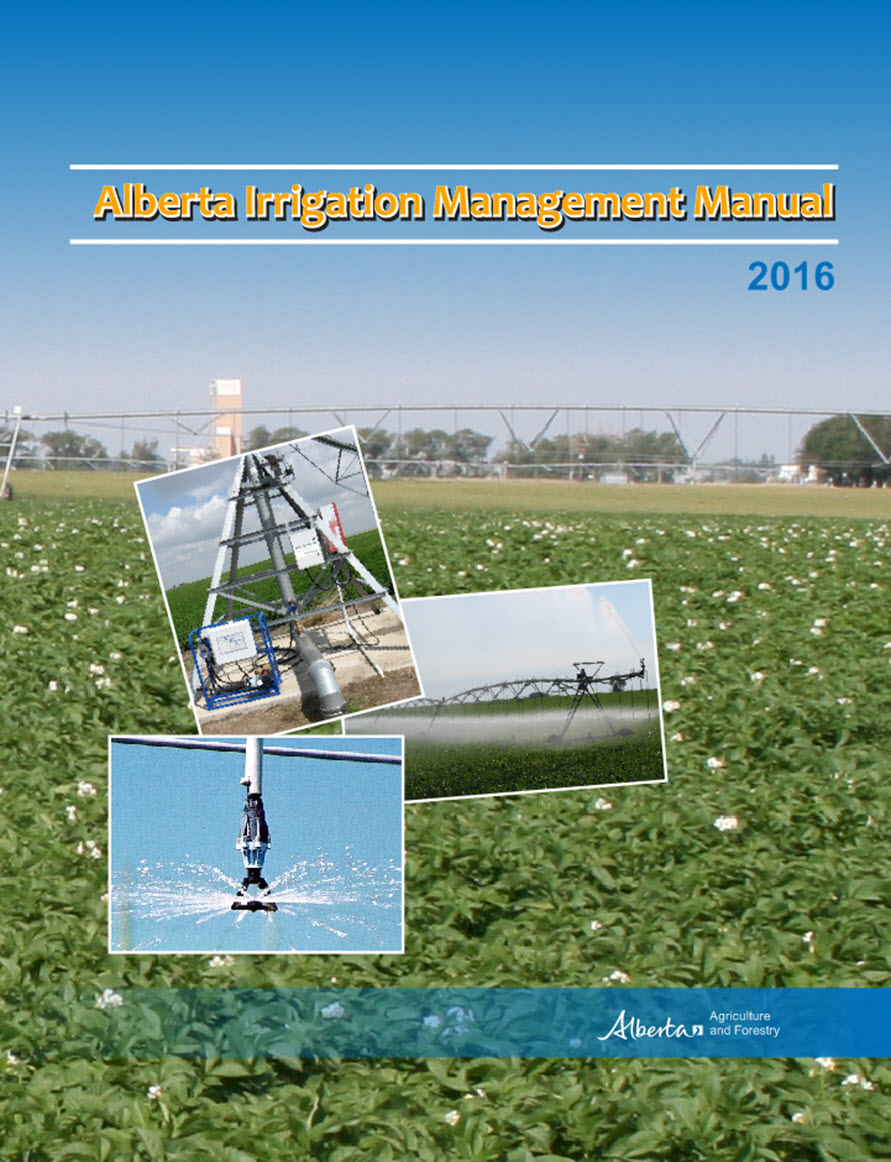| |
Alberta Irrigation Management Manual | |
| |
|
|
| |
|
|
| |
 Irrigation management of crops is a complex and multifaceted process that ensures that the agronomic (e.g., soil fertility, pest control), technical (irrigation systems and associated technology), human (manager's skills, knowledge, and decision making), and water factors that control plant growth do not limit the achievement of optimal and profitable crop production. Proper irrigation management depends on accurate irrigation scheduling that minimizes problems related to the misapplication of water. Irrigation management of crops is a complex and multifaceted process that ensures that the agronomic (e.g., soil fertility, pest control), technical (irrigation systems and associated technology), human (manager's skills, knowledge, and decision making), and water factors that control plant growth do not limit the achievement of optimal and profitable crop production. Proper irrigation management depends on accurate irrigation scheduling that minimizes problems related to the misapplication of water.
The irrigation management philosophy in Alberta is to ensure that water is available at germination and for early crop development by applying light, frequent irrigations. This method is possible with centre pivot sprinkler irrigation systems because water can be applied in increments as little as 7 mm per day. Additional water can be applied to promote vigorous early growth and to increase available soil water reserves in the entire root zone during pre-flowering growth stages.
The greatest portion of the current irrigated land in Alberta uses centre pivot sprinkler systems, which allow the flexibility of applying irrigation water in varying amounts depending on crop water need.
The objective of this manual is to provide current information on beneficial irrigation management practices for optimum production of major irrigated crops in Alberta. |
|
| |
|
|
| |
For more information about the content of this document, contact Ted Harms.
This document is maintained by .
This information published to the web on January 15, 2013.
Last Reviewed/Revised on August 12, 2016.
|
|